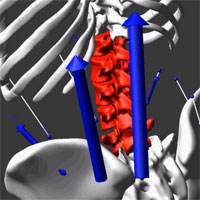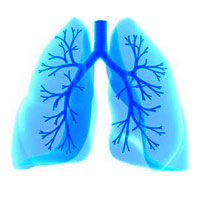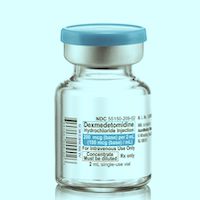Tag: study

Incident Diabetes in Survivors of Critical Illness and Mechanisms Underlying Persistent Glucose Intolerance
Diabetes and pre-diabetes occur frequently in survivors of ICU experiencing stress hyperglycemia. Based on the occurrence rate observed in this cohort, structured screening and intervention programs appear warranted. Consent... read more

Electronic Hand Hygiene System Fails to Improve Staff Satisfaction in ICU
A study published in Antimicrobial Resistance & Infection Control examined the effect of introducing an electronic hand hygiene surveillance and intervention system into an ICU. Researchers introduced the system into a general... read more

Potassium Homoeostasis and Pathophysiology of Hyperkalaemia
Since determination of potassium levels may be afflicted with various errors, potassium levels should be determined using a standardized set-up ensuring high accuracy and precision of measurements. Potassium levels may be... read more

Appropriate Treatment for Bloodstream Infections Due to Carbapenem-Resistant Klebsiella Pneumoniae and Escherichia Coli
Tigecycline monotherapy was a choice if the strains exhibited MIC ≤0.5 mg/L, and colistin monotherapy was not suitable. Our findings can initiate additional clinical studies regarding the efficacy of tigecycline in carbapenem-resistant... read more

Even Proper Technique Exposes Nurses’ Spines To Dangerous Forces
In this close-up screenshot from a simulation video, you can see the exact moment NPR correspondent Daniel Zwerdling endured dangerous levels of stress on his spine while re-creating the way nurses push their patients in... read more

Effect of Occupancy on Critically Ill Admissions
Effect of Emergency Department and ICU Occupancy on Admission Decisions and Outcomes for Critically Ill Patients. The volume of ICU admissions from the ED has increased around 50% from 2001-2009. Hospitals struggle with this... read more

Considerations in the Diagnosis of Idiopathic Pulmonary Fibrosis
The clinical practice guideline on diagnosis of idiopathic pulmonary fibrosis (IPF) by Raghu and colleagues has been helpful in addressing the complexities of radiological and pathological features in diagnosing IPF. The... read more

ICU Admissions Raise Chronic Condition Risk
A new study of ICU patients in the Netherlands shows a heightened risk of developing new chronic conditions in patients after an intensive care stay. The research showed rising likelihood of conditions such as depression,... read more

Mythbuster: Administration of Vasopressors Through Peripheral Intravenous Access
Vasopressors are frequently used in critically ill patients with hemodynamic instability both in the emergency department (ED) as well as intensive care units (ICUs). Typically, vasopressors are given through central venous... read more

Selected Imaging Controversies in ED Trauma
Traumatic injuries are amongst the most common presentations for all emergency departments (ED). In 2010, there were over 1 million patients in Canada who visited the ED for trauma, result in an cost of almost 9 billion dollars.... read more

Long-Term Mortality and Hospital Resource Use in ICU Patients With Alcohol-Related Liver Disease
ICU patients with alcohol-related liver disease have higher 5-year mortality and emergency readmission rates than ICU patients with other severe comorbidities and matched general ICU patients. These data can contribute to... read more

Effect of Intravenous Acetaminophen vs Placebo Combined With Propofol or Dexmedetomidine on Postoperative Delirium Among Older Patients Following Cardiac Surgery
Among older patients undergoing cardiac surgery, postoperative scheduled IV acetaminophen, combined with IV propofol or dexmedetomidine, reduced in-hospital delirium vs placebo. Additional research, including comparison of... read more

Implementing Early Mobilization in the ICU
The use of a quality improvement appraisal tool can help identify high quality projects when planning a similar mobility program. Even though projects were conducted in a variety of intensive care unit settings, and implementation... read more

Catheter Directed Thrombolysis for Intermediate Risk Pulmonary Embolism
Intermediate risk pulmonary embolism is common and carries a risk of progression to hemodynamic collapse and death. Catheter directed thrombolysis is an increasingly utilized treatment option, based largely on the assumptions... read more








